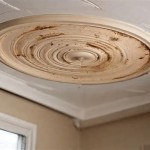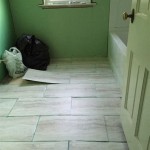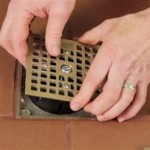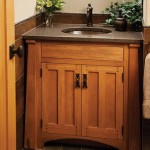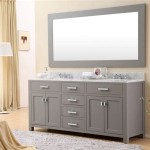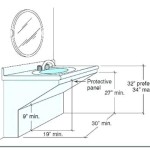How Do I Remove Mould From My Bathroom Ceiling?
Mould growth on bathroom ceilings is a common problem due to the consistently high humidity levels. This unsightly and potentially harmful fungus thrives in damp, warm environments, making the bathroom an ideal breeding ground. Effective mould removal requires addressing both the visible mould and the underlying moisture issue contributing to its growth.
Before commencing any mould removal process, safety precautions are crucial. Mould spores can become airborne during cleaning, posing respiratory risks. Always wear protective gear, including gloves, safety goggles, and an N-95 respirator mask. Ensure adequate ventilation by opening a window and running an exhaust fan. Protective clothing covering the skin is also recommended.
Several cleaning solutions are effective against bathroom ceiling mould. A diluted bleach solution is a common choice, typically mixed at a ratio of one part bleach to ten parts water. However, bleach can damage certain surfaces and release harmful fumes. Alternatively, white vinegar, undiluted, is a gentler yet effective option. Commercial mould and mildew cleaners are also readily available, offering specialized formulations.
For applying the cleaning solution, a spray bottle is recommended for even coverage. Thoroughly saturate the affected area, allowing the solution to dwell for 10-15 minutes. This dwell time allows the solution to penetrate the mould and break down its structure. Avoid scrubbing initially, as this can spread spores. After the dwell time, gently scrub the area with a soft-bristled brush or sponge.
Following scrubbing, thoroughly rinse the area with clean water to remove any remaining cleaning solution and loose mould particles. A damp cloth can be used for this purpose, followed by drying the ceiling with a clean, dry towel. Ensuring complete dryness is essential to prevent mould regrowth. A fan can expedite the drying process.
Often, the underlying cause of bathroom ceiling mould is inadequate ventilation. Improving ventilation is crucial for long-term mould prevention. Running the bathroom exhaust fan during and after showers can significantly reduce humidity. Leaving the bathroom door ajar after showering can also promote air circulation. Installing or upgrading the existing ventilation system may be necessary in cases of persistent mould problems.
Addressing leaks promptly is another essential preventative measure. Leaks in the roof, plumbing, or around windows can introduce moisture into the ceiling, creating a conducive environment for mould growth. Regularly inspect for leaks and repair them immediately to minimize the risk of mould development. Caulking around bathroom fixtures can also help prevent water seepage.
Dehumidifiers can play a significant role in controlling moisture levels in the bathroom. These appliances extract moisture from the air, reducing humidity and making the environment less hospitable to mould. Running a dehumidifier, particularly during humid seasons, can help prevent mould growth on the ceiling and other surfaces.
Regular cleaning of the bathroom ceiling can also prevent mould from gaining a foothold. Wipe the ceiling down periodically with a mild cleaning solution and ensure proper drying. This routine maintenance can help remove early signs of mould growth and prevent its spread. Incorporating this practice into regular bathroom cleaning can significantly reduce the likelihood of future mould issues.
Painting the bathroom ceiling with mould-resistant paint can provide an additional layer of protection. These paints contain mildew inhibitors that help prevent mould growth. Before applying mould-resistant paint, it's essential to remove any existing mould thoroughly and address the underlying moisture problem. This will ensure the effectiveness of the paint in preventing future mould development.
While these methods are generally effective, persistent or severe mould infestations may require professional remediation. Professional mould removal services have specialized equipment and expertise to handle extensive mould growth and ensure complete eradication. They can also identify and address underlying moisture problems contributing to the mould issue.
Beyond the bathroom ceiling, mould can also grow on other bathroom surfaces. Grout between tiles, shower curtains, and sealant around fixtures are common areas for mould development. Regular cleaning and proper ventilation are crucial for preventing mould growth in these areas. Specific cleaning methods may be required depending on the material and location of the mould.
Maintaining a dry and well-ventilated bathroom is the key to preventing mould growth on the ceiling and other surfaces. Addressing moisture issues promptly, improving ventilation, and implementing regular cleaning practices can significantly reduce the risk of mould development and maintain a healthy bathroom environment.

Bathroom Ceiling Mold Removal When To Clean Call Branch Environmental

Cleaning Mold From Bathroom Ceilings Like A Pro Lovetoknow

Don T Let Mould Take Over How To Remove It From Your Ceiling

Cleaning Mrs Hinch Fans Share Tips To Remove Ceiling Mould Express Co

How To Remove Black Mold From A Bathroom Ceiling

How To Remove Mould From Your Bathroom Ceiling Cleanipedia Za

What Is The Best Way To Remove Mold From Bathroom Ceiling

How To Get Rid Of Mold On Your Bathroom Ceiling Aqa

Mold On Bathroom Ceiling How To Clean Off

Black Spots On The Bathroom Ceiling Flood Water Damage Honolulu Oahu Hawaii Md Restoration
Related Posts
